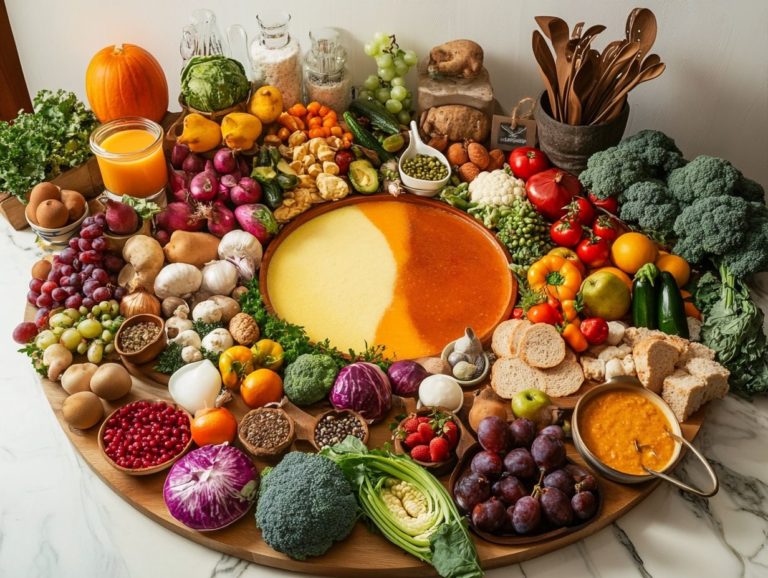5 Tips for Reducing Food Waste at Home
Food waste is a big issue, but you can be part of the solution! Reducing food waste isn t merely a trend; it s an essential practice for your finances and the environment. Each year, millions of tons of perfectly good food find their way to landfills, straining household budgets and exacerbating environmental challenges.
This article delves into five practical tips to help you minimize waste at home, from strategic meal planning to inventive ways of repurposing leftovers. It highlights the significance of these changes and how they can lead to a more sustainable lifestyle.
Embrace this journey toward a greener kitchen and a healthier planet!
Contents
Key Takeaways:
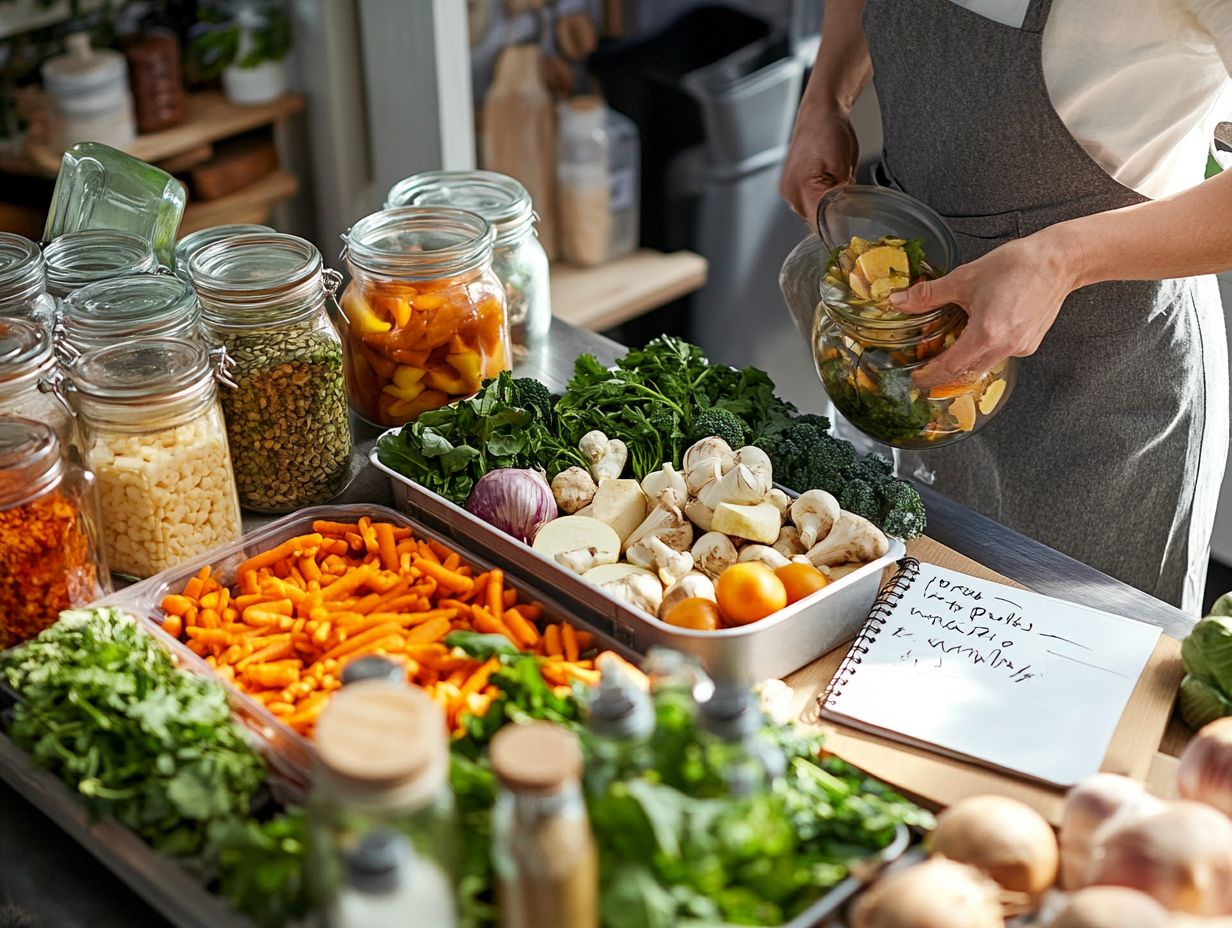
Plan meals and create a shopping list. Store food correctly to avoid spoilage. Get creative with leftovers and save money on groceries.
1. Plan Your Meals and Make a Shopping List
Effective meal planning and making a detailed shopping list are vital steps in your journey to reduce food waste and save money. This approach improves your nutrition and reduces household waste.
Creating grocery lists based on your planned meals can significantly lower the chances of buying items that might end up unused. Organize your lists by sections of the grocery store for efficient shopping and highlight seasonal foods.
Incorporating food safety practices, like properly storing foods that spoil quickly, such as fruits and vegetables, and understanding expiration dates, can elevate your meal planning. By adopting these methods, you enable more mindful consumption, ultimately contributing to a healthier planet.
2. Store Food Properly
Proper food storage is essential for maintaining freshness and quality. It helps to prevent wasted food while ensuring your fresh produce and leftovers remain safe and delicious for longer periods.
Refrigeration slows down bacterial growth, helping perishable items like fruits, vegetables, and dairy retain their integrity over time. Freezing takes it a step further by completely halting that growth and preserving flavors and textures.
To maximize these storage methods, manage your portion sizes wisely. Using airtight containers not only minimizes waste but also keeps everything organized.
Using these techniques improves food safety and encourages you to use every edible part of your groceries, significantly reducing household waste and promoting a more sustainable lifestyle.
3. Get Creative with Your Leftovers
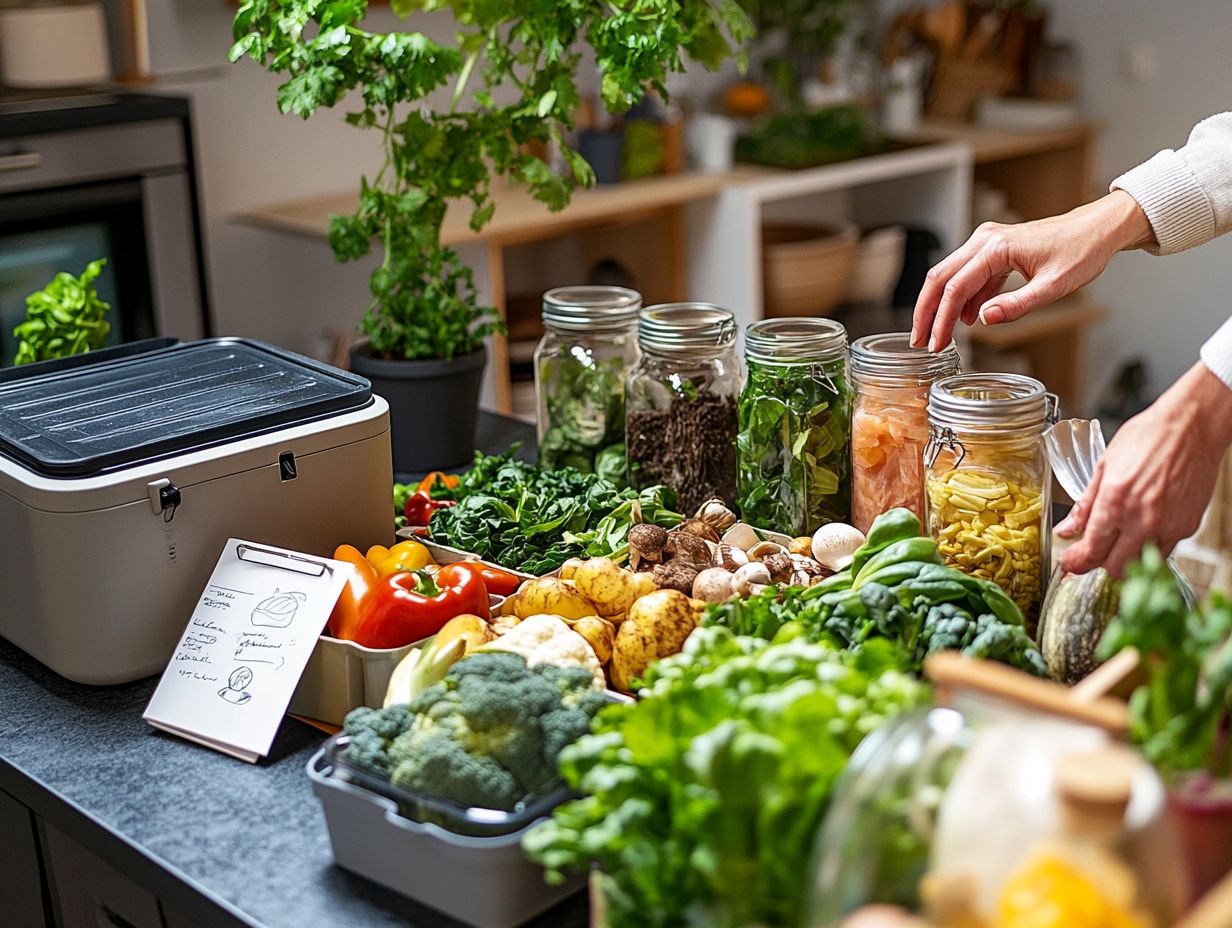
Harnessing the power of leftovers can significantly reduce food waste. With creative cooking tips and innovative meal prep strategies, you can easily repurpose what might otherwise go to waste into delicious dishes like vegetable broth or entirely new meals.
When you take a fresh look at what s in your fridge, yesterday s dinner can transform into exciting new recipes. Imagine whipping up a vibrant frittata packed with leftover vegetables or a hearty stir-fry that makes the most of those odd bits of meat and grains.
Engaging in meal swaps with friends and neighbors not only fosters a sense of community but also promotes mindful eating habits. Everyone s unique leftovers can be combined to craft something entirely new, enriching your culinary experience while exploring unfamiliar flavors.
Start your journey today and make a difference with every meal!
4. Compost Food Scraps
Composting food scraps is an effective way to divert waste from landfills and transform organic matter into nutrient-rich soil. This practice reduces greenhouse gas emissions and contributes to significant environmental improvements endorsed by the EPA.
By composting, you re not just enhancing soil health; you re also playing a crucial role in sustainable food systems by recycling waste back into the earth. You ll be excited to know that many everyday items can be composted, including:
- Vegetable peels (like carrot or potato skins) are perfect for composting.
- Fruit cores (such as apple and pear cores) can also be added.
- Coffee grounds are rich in nitrogen and beneficial for soil.
- Eggshells provide calcium, which is great for plants.
However, steer clear of adding meat, dairy, and oils, as these can attract pests and create unpleasant odors.
If you’re eager to get involved, community composting campaigns provide great resources, from compost bins to educational workshops. Participating in these initiatives encourages local stewardship of the environment while promoting conservation efforts that benefit everyone. Join your neighbors in making a difference today!
5. Donate Excess Food
Donating extra food, including those not-so-perfect fruits and veggies, is not just kind; it s a powerful way to reduce food waste while supporting community initiatives like food banks and local distribution programs.
By exploring various avenues for food donation, you can easily share surplus items from your kitchen or neighborhood. Identify nearby food banks, which typically have clear information about accepted items and their hours of operation on their websites.
Community toolkits provide great resources, offering guidelines and support for organizing food drives and encouraging your neighbors to join in on these vital conservation efforts. These initiatives create a ripple effect, ensuring that individuals receive support and the environment benefits from reduced waste. Act now to make a difference!
Why Is Reducing Food Waste Important?
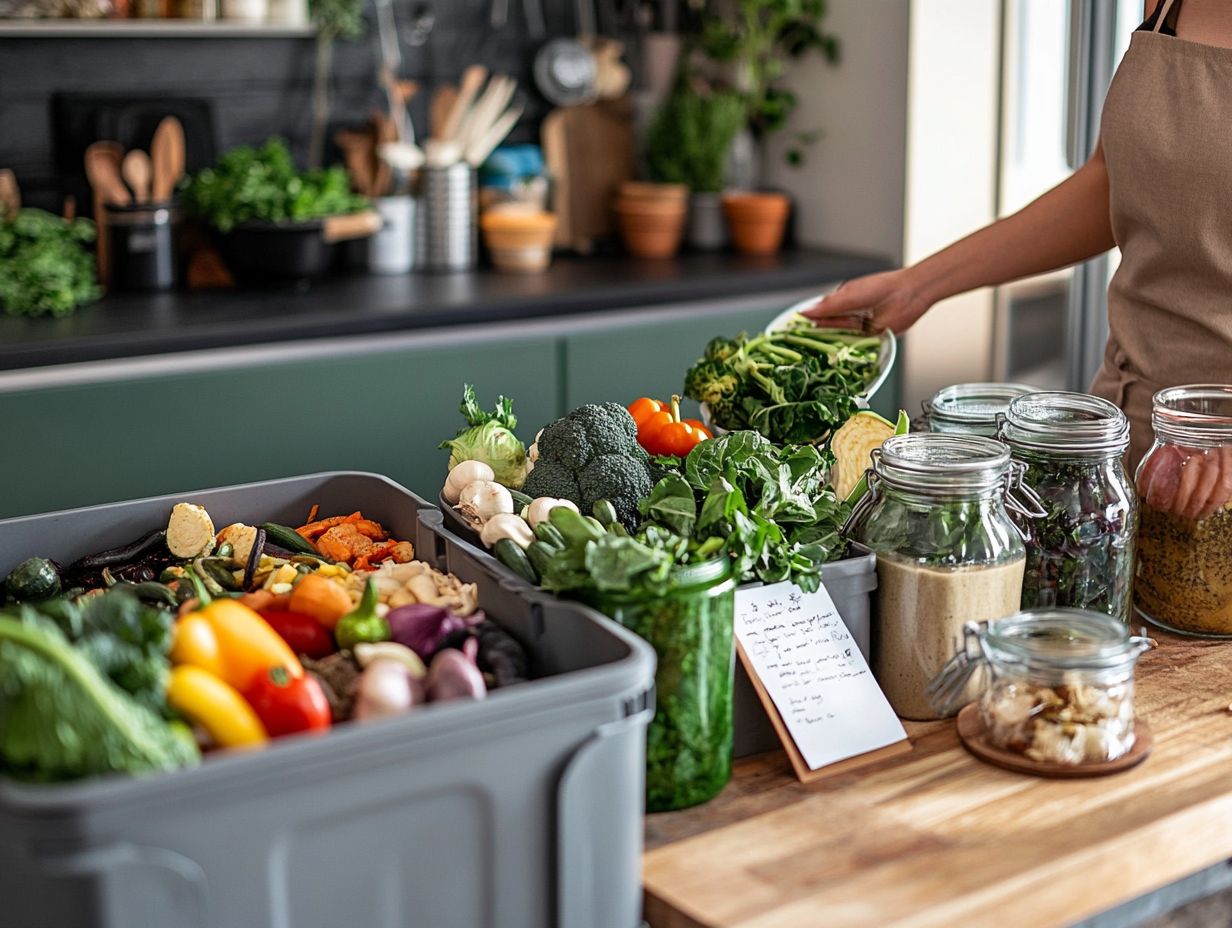
Reducing food waste is essential for conserving precious resources and for its profound impact on the environment. Wasted food significantly contributes to trash and greenhouse gas emissions, worsening climate change challenges.
Consider this: approximately one-third of all food produced globally is never consumed, releasing around 1.3 billion tons of greenhouse gases each year. This figure represents nearly 8-10% of total global emissions, underscoring the urgent need for action.
When food decomposes in landfills, it generates methane a potent greenhouse gas that is 25 times more effective than carbon dioxide at trapping heat in the atmosphere. This cycle threatens biodiversity and natural habitats while undermining the integrity of our food systems. Such a shift invites you to rethink your consumption patterns and nurture environmental stewardship.
Now is the time to signal a collective commitment to a more responsible future!
What Are the Environmental Impacts of Food Waste?
The environmental impacts of food waste are staggering. When food decomposes in landfills, it generates methane emissions that significantly contribute to climate change and global warming.
This process creates a harmful cycle, wasting valuable resources while increasing methane levels. Food waste has a lifecycle that begins with agricultural production and extends to consumption, with inefficiencies at every stage causing unnecessary environmental harm.
By taking steps to reduce food waste, you can significantly mitigate these adverse effects. Simple actions like meal planning, better storage techniques, and composting can substantially lower waste levels.
These practices align perfectly with broader climate initiatives aimed at reducing greenhouse gas emissions and fostering sustainable food systems. Join your community in making a difference today!
How Can Reducing Food Waste Save Money?
Reducing food waste can lead to significant financial savings for you. By embracing careful meal planning and portion control, you can minimize unnecessary expenses and truly maximize the value of every grocery dollar spent.
Adopt specific strategies to make your kitchen sustainable and cost-effective. For example, planning your meals for the week allows you to craft a focused shopping list. This way, you reduce impulse buys and ensure that every item you purchase gets used.
Incorporating smart shopping techniques, such as buying in bulk or selecting seasonal produce, can help you cut costs dramatically. Staying mindful of best before dates and storing food properly can extend its usability.
These straightforward and powerful practices ease financial pressures while positively contributing to environmental sustainability.
What Are Some Common Causes of Food Waste in Homes?
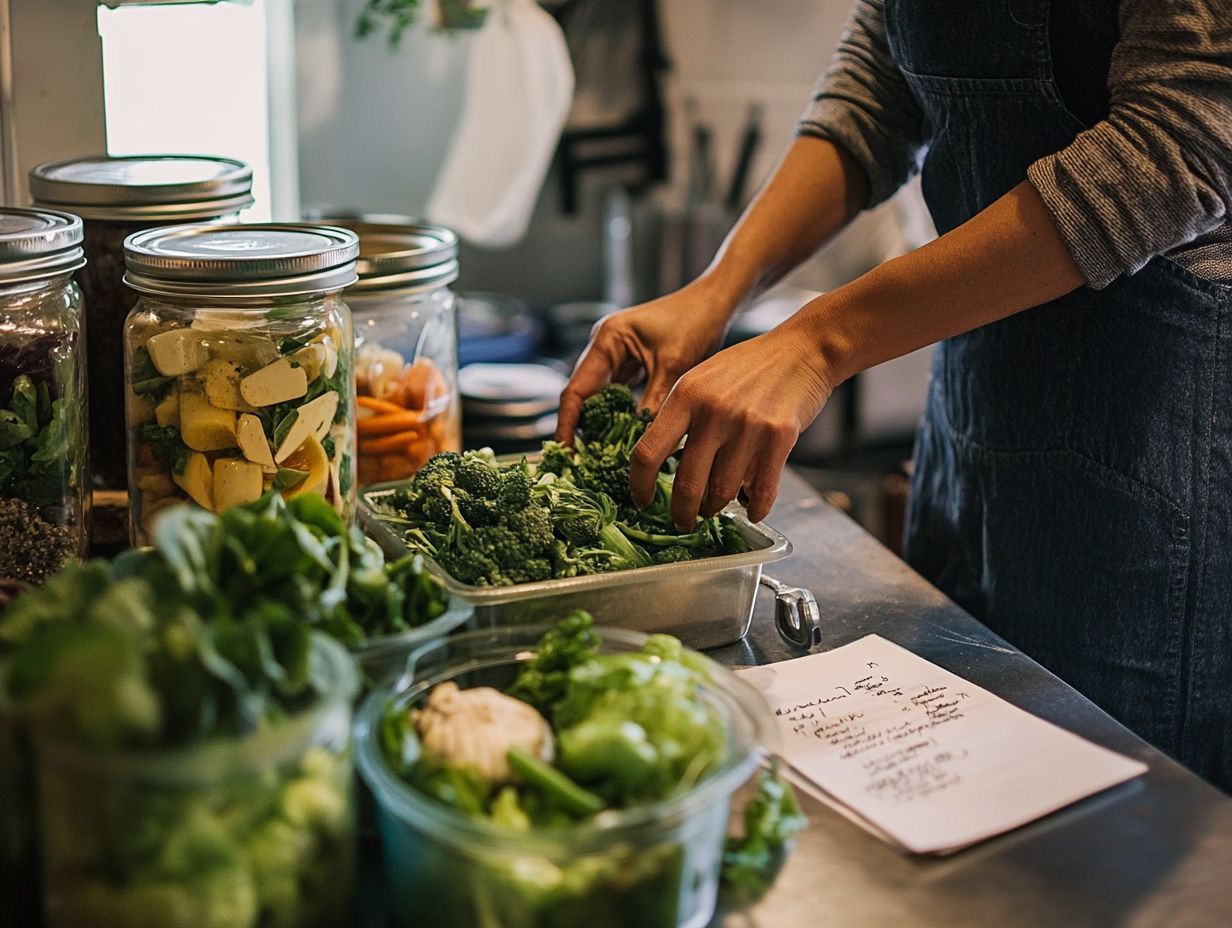
Common causes of food waste in your home often stem from improper food labeling and misunderstandings about best before dates. Mismanaged portion sizes also result in surplus food that ultimately goes uneaten.
These factors play a significant role in the staggering quantities of food that make their way to landfills each year. When you find yourself grappling with food labels, there s a chance you re tossing out items that are still perfectly safe to enjoy. Confusion surrounding ‘sell-by’ and ‘use-by’ dates can lead to the premature disposal of products.
By improving your cooking habits such as planning meals in advance and creatively using leftovers you can significantly reduce waste. Enhance your food storage methods by organizing the pantry and employing clear containers. This ensures that perishable items are consumed before they spoil, creating a more efficient approach to managing your food resources.
How Can Meal Planning Help Reduce Food Waste?
Meal planning serves as a powerful strategy for reducing food waste. It encourages you to craft grocery lists that reflect your actual needs and promotes mindful cooking practices.
This approach facilitates a kind of ‘waste audit’ within your household food systems. By structuring your meals in advance, you can align your shopping habits with authentic consumption patterns, steering clear of impulse purchases that lead to excess.
To embark on effective meal planning, dedicate a portion of your week to assess what ingredients you already have on hand. This practice can minimize unnecessary new purchases significantly.
As your grocery lists begin to take shape, consider incorporating seasonal produce. This enhances the freshness of your meals while helping you save money.
Regularly conducting ‘waste audits’ allows you to pinpoint food items that frequently go uneaten. This offers invaluable insights for refining your future meal plans and fostering sustainable consumption habits. This ongoing process nurtures a deeper appreciation for food and bolsters your budgeting efforts.
What Are Some Creative Ways to Use Leftovers?
Get creative with your leftovers! Transform last night s dinner into something new and delicious. For example, craft a sumptuous vegetable broth or whip up mouthwatering frittatas featuring last night s roasted vegetables.
Create savory stir-fries that elevate the flavors of leftover grains. If you have a sweet tooth, turn stale bread into delightful bread pudding or blend overripe fruits into a refreshing smoothie.
These innovative approaches not only help reduce food waste but also invite you to explore new culinary dimensions right in your kitchen. Whether you have a few random ingredients or an abundance of extras from a feast, experimenting with leftovers can lead to wonderful and surprising new meals that impress both family and friends.






